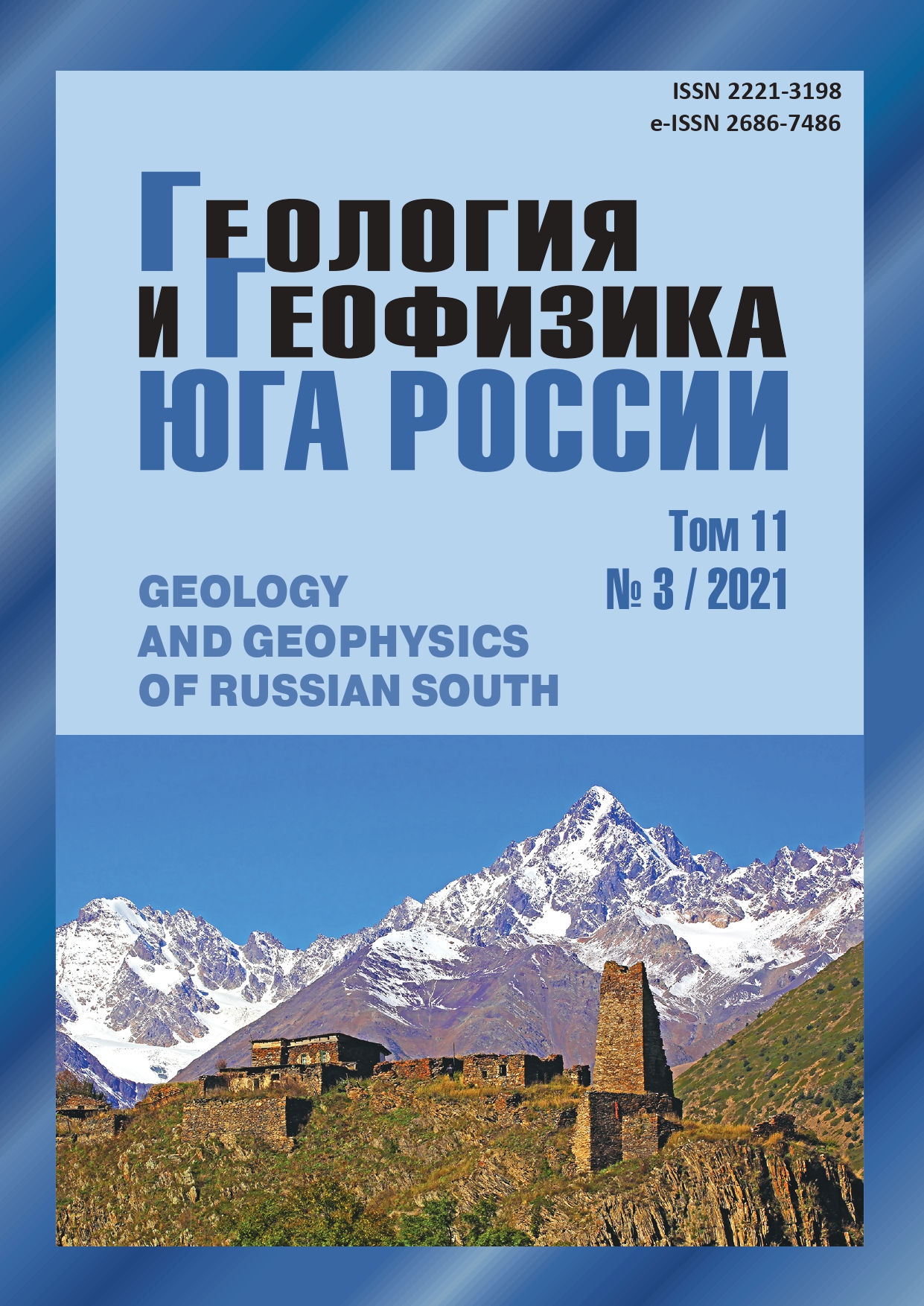Salt structures of the sedimentary cover of the Russian platform as a reflection of possible geodynamically active foci of hydrocarbon generation in the basement (on the example of the south-west of the Orenburg region)
Abstract
Abstract: Relevance. In 2021, A.A. Dragunov, using system-geodynamic decoding, identified the East-Orenburg and West-Orenburg geodynamically active centers of hydrocarbon generation of the Orenburg oil and gas condensate field. It was assumed that a number of small deposits in the south-west of the Orenburg region also receive recharge from them. The aim of the presented work was an attempt to trace the above-mentioned sources of hydrocarbon generation in the foundation and sedimentary cover on the basis of reinterpretation of time sections of regional seismic profiles. Methods. The selection of tectonic disturbances was carried out manually using the author’s methodological techniques of approximations and sequential detailing. After that, a systematic generalization and analysis of the results obtained was carried out in the light of the prospects for oil and gas potential of the south-west of the Orenburg region. Results. As a result of the work, the deep structure of the foci was considered, the seismogeological features of their detection were noted. Neotectonic faults of the “flower” type, chaotic vertically directed locally enhanced seismic recording under them below the reflecting horizon identified with the basement rocks were recorded in the places of mapping the generation centers on time sections. The connection of deep faults and the newest feathering faults associated with them with salt-dome structures of the Kungur age is traced. According to the results of a comprehensive geological analysis of structural structures, a schematic network of neotectonic basement faults has been identified, judging by which the Orenburg oil and gas condensate field and other smaller hydrocarbon deposits and the structures identified by seismic surveys in the southwest of the Orenburg region have a regular distribution within a large radial-concentric structure with a diameter of about 180 km. This structure probably represents a zone of decompression in the foundation, within which promising structures in terms of oil and gas potential were formed in the sedimentary cover. The Orenburg deposit, which is unique and the largest within the south-west of the Orenburg Region, is located in the center of the macrostructure, possibly being the result of the work of the main centers of HC generation in the foundation. Smaller hydrocarbon deposits are concentrated along the radial and concentric faults. In addition, the Orenburg field is confined to the zone of overlap of two concenters, which is probably a significant factor in the discovery of large deposits. As conclusions, recommendations are given for further research and search for possible geodynamically active centers of hydrocarbon generation within the Russian platform.


